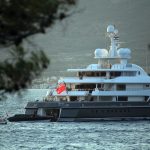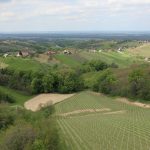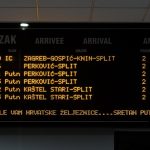Huge wildfires which ravaged the coastline lately were put out, in addition to the brave firefighters on the ground, firefighting aircraft played a huge role. Morski.hr spoke with Denis Smajo, pilot of the firefighting aircraft Airtractor AT-802 A Fire Boss.
How does one decide to be a firefighting aircraft pilot?
In my case it was nowhere near my mind in the beginning. I wanted to be a fighter pilot, and my first desire came in high school, although I fantasised about it from early childhood. I was never interested in ordinary civilian flying, but exclusively in true action, which military flying is. However, soon after completing my education and being allocated to the Fighter Plane Squadron in Zagreb, I was sent to be educated as a flight instructor in Zadar, where I happened to stay and work on educating young pilots. I liked Zadar as a town very much and had no desire to go back to Zagreb. At the end of 2008, with the procurement of new firefighting aircraft, there was a need for a larger number of pilots in the Firefighting Squadron in Zemunik near Zadar. I took the challenge and today I can say I am glad I got the opportunity of a lifetime to do this job. What I wanted, I got in the end, true action every year.
If you are an Airtractor pilot, can you still fly a Canadair or is it different?
That’s correct, I am an Airtractor AT-802 pilot and cannot at the moment pilot a Canadair as I didn’t complete training for that aircraft type. In the beginning, upon arriving to the Firefighting Squadron, we are selected to train for just one aircraft type. After a certain amount of flight hours and experience, we go on to train for flight instructors and test pilots, which I personally did on my aircraft type.
There is later a possibility, as often happens, for an aircraft type change from Airtractor to Canadair and vice versa, but with additional training. In that case, this is not something slow or overly demanding for our pilots are they are similar. Some of our more experienced pilots completed training for both aircraft and can fly both, but for safety they avoid to fly different types in one firefighting season.
When they cannot subdue the fire, ground forces commanders often call for Canadairs. I have to admit I have never heard in those calls “or an Airtractor.” Let’s resolve this enigma of the Airtractor: how different is it, more or less functional and which type is used for what?
Yes, we are often “forgotten” in communication, both by the public and firefighters. Everyone is accustomed to using the term “Canadair” when speaking of firefighting aircraft. Many people don’t even known Airtractors exist, just like our Mi-8 helicopters we also use for firefighting and transport of firefighters. Media often leave us out in their reports, which may be the reason we are so unknown, although things have improved lately. Those reports also often leave out the people servicing our aircraft day and night.
Honestly, this does not bother me at all, but it would be correct to mention all the people who invest huge efforts each season to defend property and people. As for the firefighters, in the beginning they only called for Canadairs as they were sceptical of an aircraft which only carries half the water bomb of a Canadair. However, with our work and efficiency, we managed to dismiss such prejudices and the situation has significantly improved, so we can now be seen on almost all fire sites.
As for differences, these two aircraft differ in many ways, especially their performances.
Canadairs are bigger, can work in “tougher” and more demanding conditions, meaning wind and waves. They carry 6 tonnes of water, have two turboprop engines and flying a multi-member crew, while the Airtractor is a single engine plane with one pilot, except for the two-seater we use for pilot training.
The Airtractor carries up to 3.100 litres of water and is exceptionally functional and economical. Both planes are used in combination on all fire sites with the Canadair having the role of a fast initial strike and subduing and slowing down the fire, while the Airtractor is mostly used to extinguish flanks and localising the fire.
As for manoeuvring, the Airtractor can “crawl” into harder to reach places as it is highly manoeuvrable and can fly at very slow speeds. Also, as the Airtractor is a much more economical aircraft, we use it for firefighting reconnaissance and fire estimates. Along with early fire detection our task is also to attack the fire in the very beginning and slow it down as much as possible in its development.
When the season begins, how many hours do you spend in the air on average? What does you day look like?
It is hard to speak of an average as it all depends on what the firefighting season is like, as well as the weather conditions. It mostly turns out that the largest strain is in July and August, although there are exceptions. Sometimes we fly the maximum of 7 hours each day, which is our daily limit, and sometimes there are days without fires, so we spend the day in readiness on the ground. A regular day begins at 7h to a half hour before sunset. In case of a fire the night before, we come in earlier, and in case of a late fire we stay later. At work we are on “yellow” alert, meaning we have to be in the air within 30 minutes. If there is no fire, we have other duties, paperwork or studying and flight preparations. Naturally, we also use that time to recharge and do sports, as our physiological conditions is important.
How many firefighting aircraft pilots does Croatia have?
This number varies each year, as some pilots retire, others come for retraining. In any case we are up to our duties and always ready to fly to all fire sites.
We all know what it looks like from below, but how does it feel to land on the sea surface, and then drop water from the tanks form your perspective?
It is a bit hard to describe this to others. Naturally, there are special pleasures in such a job, but for a firefighting pilot this it routine work. The possibility of being a fast speedboat at one moment and a firefighting aircraft in another is very interesting by itself. My personal favourite part is when you drop a water bomb in a fire site and hit your mark. It is a special feeling to known when you are useful in your work.
Can you single out your toughest experiences and how do you deal with emotions in that moment?
I would single out the wildfire on Brač in 2011, when a large portion of the island burned up. The fire was extremely large and very demanding with low visibility due to smoke. The fire challenged our air forces, so even today we recall being extremely tired from all of it, although it was only the beginning of July. I also recall the strong emotions of emptiness after everything. Usually military pilots are resistant to stress and emotions, so I handle it quite well. I do have my exhaust valves, so I have no problems with it. My medicine is also my family which supports me in everything.
How do you feel when you know you are needed, and cannot fly due to high wind and turbulence? Did you take part in firefighting around Split?
In those moments I am always disappointed and angry as I cannot help in any way, and I know the fire is very dangerous with high winds such as the Bura. No one from the squadron took part around Split that day as the turbulence was extremely strong and a danger to our aircraft and pilots. Only the next day, when the wind subsided, our aircraft were sent to fight the fire, but it had already done huge damage. Personally I find it most important there were no human casualties as everything else can be fixed.
Translated from Morski.hr.











